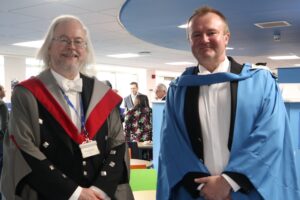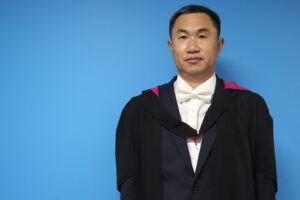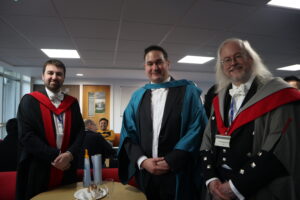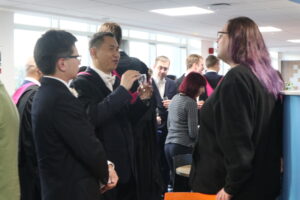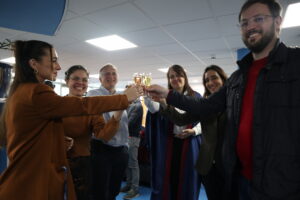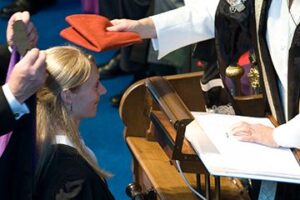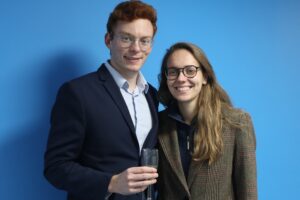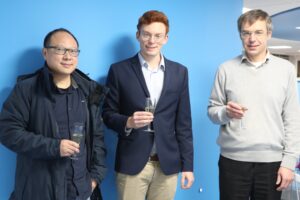CUPIDO
PhD success for a former graduate
Last month Professor Simon Dobson was invited to be on the PhD examining committee for Indushree Banerjee at TU Delft.
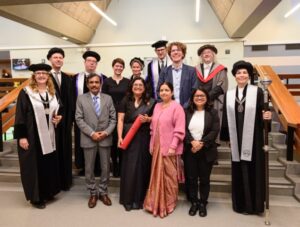
She passed with flying colours, for her thesis on ad hoc network protocols for use in disaster recovery situations. The protocol is designed around a very strong model of social justice and equality, working on low-power mobile devices and operating so as to conserve power reserves and device lifetime over the important 48-hour initial period of disaster relief.
Indushree did her MSc in St Andrews ten years ago, which gives us the opportunity for a couple of before-and-after photographs.
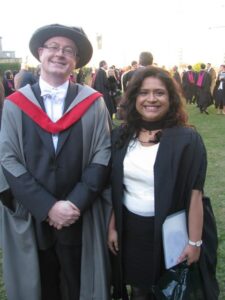
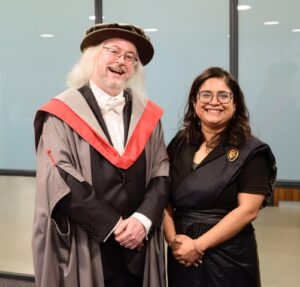
Neither of them seem to have changed all that much, apart from Simon having gone “Full Gandalf” during lockdown.
Indushree is now doing a postdoc in Delft, focusing on technology applied to wildlife conservation and ecology. We’re hoping to get her over for a seminar in the new year.
PhD opportunity: Interdisciplinary approaches for improving biodiversity assessments using remote sensors
The project will be heavy on state of the art machine learning with applications to statistical ecology. The project will be jointly supervised by the Schools of Maths and Stats (Alison Johnston, Chris Sutherland) and Computer Science (Kasim and Oggie) and potentially fully funded by CREEM.
Strong applicants with experience with deep learning and strong maths background are particularly welcome to apply.
PhD Viva Success: Catherine Cassidy
Workshop on Teaching and Assessing Technology Ethics, Tuesday 6 Dec
If you are currently teaching or interested in teaching anything to do with ethics and technology, then please consider attending a half-day workshop that Dharini Balasubramaniam and Tristan Henderson are holding in JC 1.33 on Tuesday 6 Dec.
The aim is to discuss challenges, share syllabi and best practices, and ideally to build a shared repository of teaching resources.
This event is kindly sponsored by the SICSA Education theme.

November Graduation
The School of Computer Science will host a small graduation reception in the JC coffee area on Tuesday 29th November between 14:00-16:00.
Graduating students and their guests are invited to come along and celebrate with a glass of bubbly.
Computer Science degrees will be conferred in an afternoon ceremony in the Younger Hall. Family and friends who can’t make it on the day can watch a live broadcast of graduation.
Research hub considers response to life beyond Earth
The new SETI Post-Detection Hub, coordinated by Dr John Elliott, an honorary research fellow of the School of Computer Science has gathered widespread press interest, across UK, Europe, USA, Canada, South America and South East Asia.
The Hub hosted by the Centre of Exoplanet Science and the Centre for Global Law and Governance of the University of St Andrews, will act as a coordinating centre for an international effort bringing together diverse expertise across both the sciences and the humanities for setting out impact assessments, protocols, procedures, and treaties designed to enable a responsible response should we discover intelligent life forms beyond our planet.
More information about the hub can be found in the university press release
EngD Viva Success: Patrick Schrempf
Phd Scholarships for 2023
Scholarship Description
The School of Computer Science is offering the following types of scholarships for 3.5 years of study in our PhD programme. UK, EU and International students are all eligible for:
• Fully funded scholarships consisting of tuition + stipend
• Tuition-only scholarships
This award is part-funded through the University’s new ‘handsels’ scheme.
Value of Award
• Tuition scholarships cover PhD fees irrespective of country of origin.
• Stipends are valued £17,668 per annum (or the standard UKRI stipend, if it is higher).
Eligibility Criteria
We are looking for highly motivated research students willing to be part of a diverse and supportive research community. Applicants must hold a BSc or MSc in Computer Science or a related area appropriate for their proposed topic of study.
International applications are welcome. We especially encourage female applicants and underrepresented minorities to apply.
Application Deadline
All applications received before 1st February 2023 will be considered for the first round of scholarship eligibility. Later applications will also be considered for scholarships as long as funding remains.
How to Apply
If accepted, every PhD application indicating interest will automatically be considered for these scholarships. There is no need for a separate application.
The best way to win one of our scholarships is to make a robust PhD application. You are strongly encouraged to approach supervisors before formal submission to discuss your project ideas with them.
The School’s main groups are Artificial Intelligence and Symbolic Computation, Computer Systems and Networks, Human-Computer Interaction, and Programming Languages. It is highly recommended that applicants identify potential supervisors in their applications. A list of existing faculty and areas of research can be found at https://www.st-andrews.ac.uk/computer-science/prospective/pgr/supervisors/). All supervisors listed on this page may be contacted directly to discuss possible projects.
Full application instructions can be found at https://www.st-andrews.ac.uk/study/apply/postgraduate/research/.
Inquiries and questions may be directed to pg-admin-cs@st-andrews.ac.uk.


